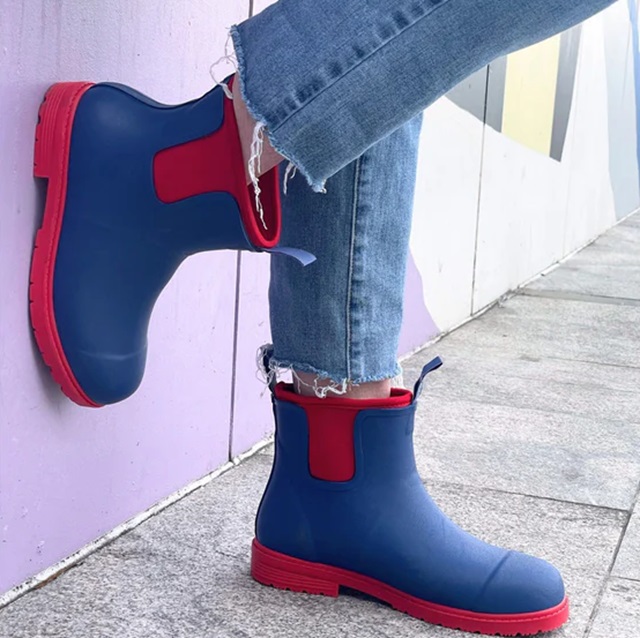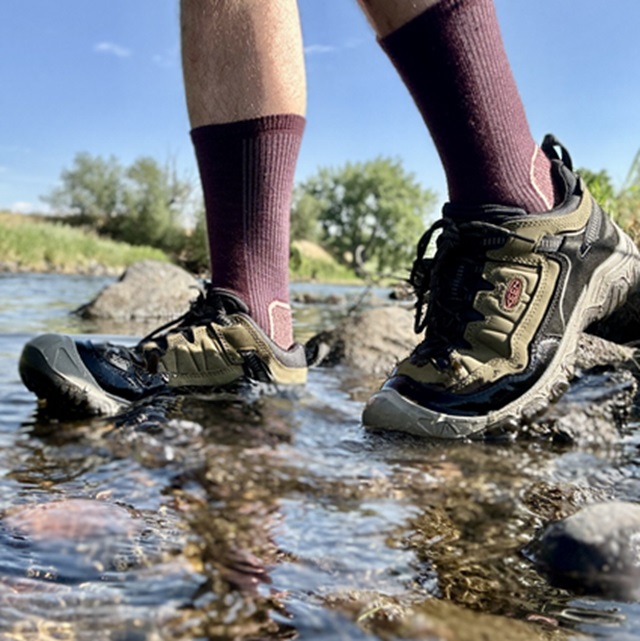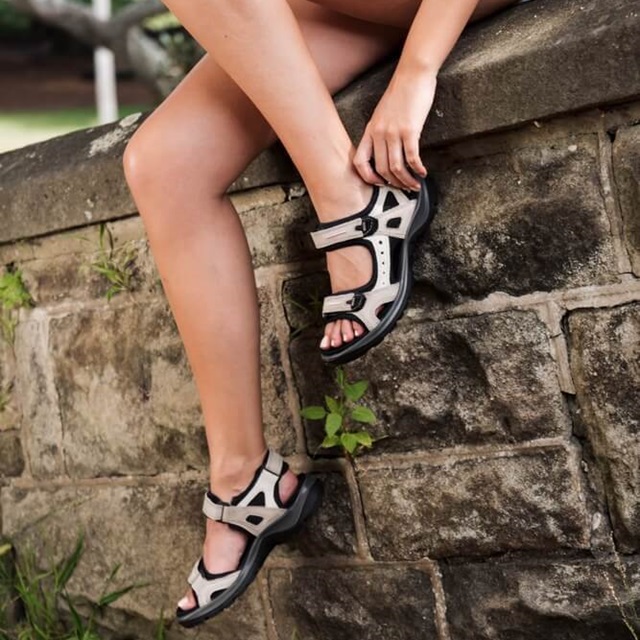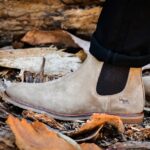Waterproof and water-resistant footwear are essential for different outdoor activities, from hiking and camping to commuting and gardening. These types of footwear protect against the elements, keeping your feet dry and comfortable in wet conditions. While both waterproof and water-resistant footwear offer protection against moisture, there are key differences between the two terms. Waterproof footwear is completely impervious to water, meaning no moisture can penetrate the material. This is ideal for activities in wet or snowy conditions.

Water-resistant footwear offers protection against light rain or splashes, but it may not be completely impervious to water. This type of footwear is suitable for milder weather conditions or activities where complete waterproofing is unnecessary. Choosing the right type of waterproof or water-resistant footwear for your specific needs can stay dry, comfortable, and protected in various outdoor environments.
Waterproof Shoes
Waterproof shoes are designed to prevent water from entering the shoe, keeping your feet dry even in wet or muddy conditions. These shoes, waterproof and durable, are particularly useful for outdoor activities like hiking, running, or simply walking in rainy weather. The construction of long-lasting waterproof shoes Australia wide typically involves using specialised materials. Gore-Tex is one of the most popular waterproof membranes, known for its durability and effectiveness in repelling water while allowing some breathability.
Other waterproof membranes or coatings may also be used, depending on the brand and design of the shoe. The primary benefit of waterproof shoes is their ability to keep your feet dry, for comfort and prevent blisters or other foot problems in wet conditions. They are also often more durable than non-waterproof shoes, as they are designed to withstand harsh environments.
However, waterproof footwear does have some limitations. While they excel in keeping water out, they may not be as breathable as regular shoes, which can lead to discomfort in warm weather. It’s important to consider the climate and weather conditions in which you’ll be wearing waterproof shoes. If you need breathable footwear for warm weather activities, consider water-resistant shoes or those with mesh panels for increased ventilation.
Water-Resistant Shoes

Water-resistant shoes are designed to repel water to a certain degree, offering protection against light rain, splashes, or damp conditions. Unlike waterproof shoes, which are completely rainproof to water, water-resistant shoes provide a balance between keeping feet dry and maintaining breathability.
The construction of water-resistant shoes typically involves the use of treated materials or water-repellent coatings. These treatments create a barrier on the shoe’s surface that helps prevent water from seeping in. Common materials include treated leather, synthetic fabrics, or textiles with hydrophobic coatings, which shed water while allowing some air circulation.
The primary benefit of water-resistant shoes is their ability to protect against light rain or splashes without compromising too much on breathability. This makes them versatile for everyday wear in mild, wet conditions. They are often lighter and more flexible than fully waterproof shoes, making them comfortable for many activities.
However, water-resistant shoes do have limitations. They are not designed to withstand heavy rain or prolonged exposure to water, which means they may eventually let moisture in under more extreme conditions. Therefore, while they offer a good balance of protection and comfort, they may not be suitable for situations where complete waterproofing is necessary.
Choosing the Right Footwear
When choosing the right footwear, particularly waterproof or water-resistant shoes, several factors should be taken into account to ensure they meet your needs. Firstly, consider your activity level. waterproof shoes are ideal for hiking, running, or outdoor adventures in wet environments. They provide maximum protection against water, keeping your feet dry even in extreme weather or when crossing streams. water-resistant shoes might be more suitable for casual wear or everyday activities, offering enough protection against light rain or occasional wet conditions without the bulk or weight of waterproof shoes.
The climate and weather conditions you’ll be facing are also critical. In areas with frequent heavy rain, snow, or muddy terrain, waterproof shoes are a must to ensure your feet stay dry and comfortable. On the other hand, if you live in a region where rain is occasional or you’re mostly dealing with damp sidewalks or drizzle, water-resistant shoes should suffice. Personal preferences such as comfort and style also play a role. Waterproof shoes tend to be sturdier and sometimes less breathable, which may affect comfort in warm weather.
Water-resistant shoes, being lighter and more breathable offer a better balance between protection and comfort for everyday use. Lastly, choose waterproof shoes when you expect extreme weather or are planning water-based activities, ensuring your feet stay dry in the toughest conditions. Opt for water-resistant shoes when you need something versatile for light rain or occasional wet conditions, providing adequate protection without sacrificing comfort or style.
Final Words

Understanding the differences between waterproof and water-resistant shoes is essential for choosing the right footwear. These waterproof shoes Australia wide are designed to keep your feet completely dry in extreme weather conditions or during water-based activities. They provide maximum protection but may lack breathability, making them better suited for wet, cold environments. On the other hand, water-resistant shoes offer a balance between protection and comfort, shielding your feet from light rain and dampness while maintaining better airflow.
When selecting footwear, consider your activity level, the climate you’ll be facing, and your preferences for comfort and style. Waterproof shoes are a smart choice for those planning the essentials you need on your hiking adventures to ensure dryness and comfort on challenging trails. Regardless of your choice, proper care and maintenance are crucial for extending the life and effectiveness of your shoes. Regular cleaning, applying protective sprays, and allowing shoes to dry properly will help preserve their water-repelling qualities and keep them in top condition for your next adventure.





















